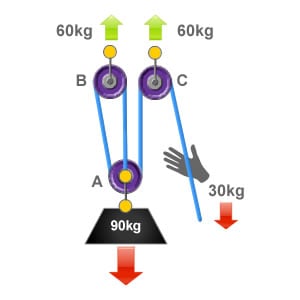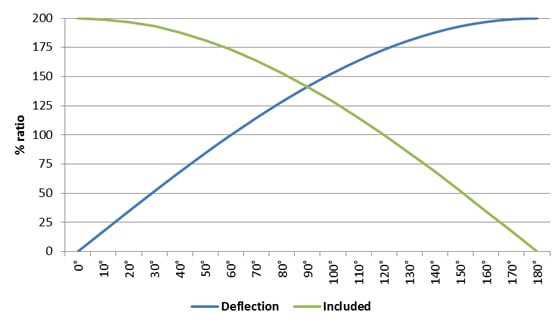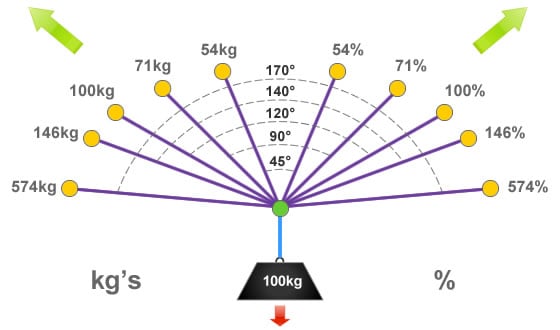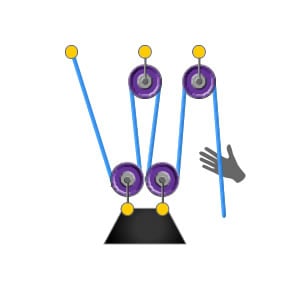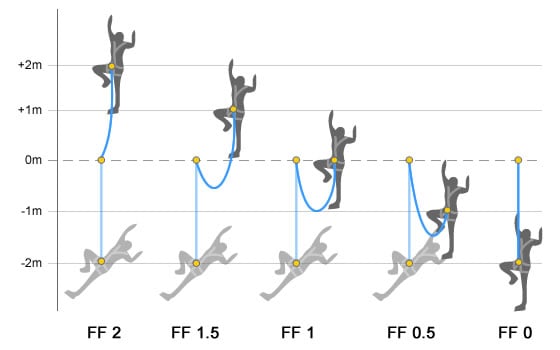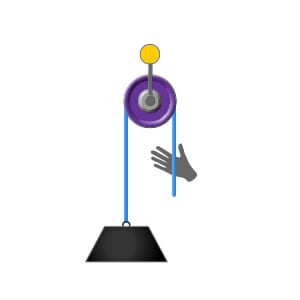The 3:1 Pulley System
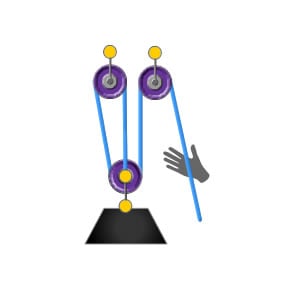
Here we have a 3:1 mechanical advantage. First one end of the rope is attached directly to the load, this is then passed around an anchored pulley (pulley B) and returns back to the load where it is passed through pulley A which has been fixed to the load.
This forms the 3:1 mechanical advantage, finally the rope is redirected by pulley C back down to the user who applies an effort of 30kg to raise the 90kg load.
An easy way to calculate the ratio of a pulley system is to count the amount of lines that apply effort on the load. In this system there are three ropes that exert effort on to a load of 90kg, so each rope is supporting 1/3 of the loads weight (30kg). Pulleys B & C and their anchors are subject to 60kg each.
